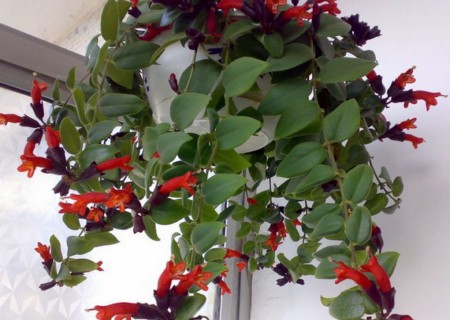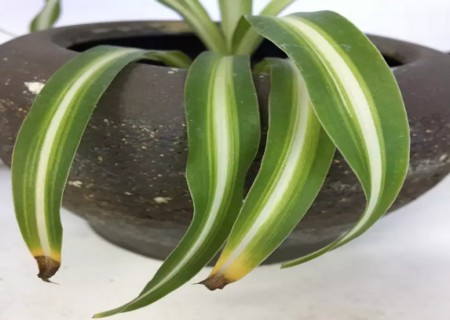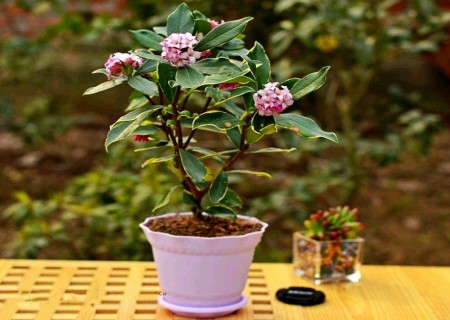Lipstick hanging orchid leaves how to do
The flowers and plants in the world are charming, but some people only love lipstick orchids. For these potted friends who love flowers and plants, potted flowers and plants may also become their biggest hobby. Lipstick hanging orchid is highly ornamental, and Ye Cui Hua Yan, blooming flowers are similar to lipstick, so it is called "lipstick hanging orchid". As the lipstick hanging orchid is less eroded by diseases and insect pests, home breeding is very important, so more and more potted friends have joined the potted plant team.

However, even if there are fewer diseases and insect pests, there are still potted lipstick hanging orchids cultivated in the home of potted friends who have lost their leaves. How is this going on? What should I do when the lipstick loses its leaves? In fact, the loss of leaves in potted flowers and plants is mostly due to water and fertilizer, so we must first start from the aspects and find out the crux of the problem in order to prescribe the right medicine and restore the vigor and vitality of the plants.
1. Improper watering
If it is not properly watered, it may lead to the loss of leaves of potted lipstick orchids in the home, especially in the case of excessive watering. So, how should lipstick hanging orchid be watered so as not to drop leaves?
Through the previous article pushed by the editor, we know that lipstick orchids have a great demand for water during the peak growth period, so they have to be watered almost three or four times a week, especially in summer high temperature weather, in addition to watering, it is also necessary to spray water on the leaves of the plant, and you can also sprinkle water in the surrounding environment, so as to improve the humidity of the air and achieve the purpose of moisturizing the plant. Of course, the watering of the plant should not be excessive, especially in the season when the plant growth is too slow, if excessive watering can easily lead to stagnant water in the basin, resulting in rotten roots, yellow leaves, and leaf loss.
2. Improper fertilization
Improper fertilization is another important reason for lipstick to drop leaves, which is usually caused by fertilizer damage caused by excessive fertilization or high concentration of fertilizer applied. As we all know, many plants need to replenish nutrients in the process of growth, but they need to be moderate and cannot be applied blindly, and potted lipstick orchids are no exception. then how to fertilize lipstick orchids will not cause fertilizer damage and the phenomenon of yellow leaves and loss of leaves?
Lipstick hanging orchids like the fertile soil environment, but the demand for fertilizer is not great. Even if it is fertilization, it is recommended to apply thin mature liquid fertilizer, so as to avoid the stimulation of raw fertilizer to the plant, and the concentration will not be too high. Through the application of thin mature liquid fertilizer, the plant can absorb more fully, evenly and safely on the basis of ensuring the supply of nutrients, so as to effectively avoid suffering from fertilizer harm. from this aspect, the occurrence of yellow leaves and falling leaves of the plant was put an end to.
3. Lack of light
In daily maintenance and management, improper water and fertilizer is the main cause of yellow leaves and leaf loss, of course, apart from water and fertilizer, is there no other factor that can lead to plant leaf loss? In fact, in addition to water and fertilizer, if the plant grows in a dark environment for a long time, the plant will lack light, which will affect photosynthesis, so it will not be able to complete the metabolism of the new city in time, and the plant will naturally wither, yellow leaves, and lose leaves.
Therefore, according to the growth characteristics of lipstick orchid, we know that lipstick orchid likes to grow in a warm and bright semi-shade environment, especially in winter, should provide sufficient light for the plant. If the lipstick hanging orchid is placed in a place where there is not enough light or not enough light for a long time, it will not only lose the leaves, but also make the leaves desalinate and the plants malaise. It can be seen that light is also very critical to the growth of plants.
Through the above three points, we know that the loss of leaves is mostly caused by improper water and fertilizer and lack of light, so we should strive to do a good job in these three aspects in the process of daily maintenance and management.
Time: 2019-05-30 Click:
- Prev

What about the yellow tip of the orchid leaves?
Magnolia is a perennial herbaceous green plant, often seen in the pastoral small fresh style of home environment, usually as a drape pot for viewing, very beautiful. But recently, a flower friend asked: my family has a pot of orchids, which grows well, but there is always the phenomenon of leaf tip yellowing and withering.
- Next

What if Phnom Penh Ruixiang does not blossom?
Phnom Penh Daphne is widely used in family potted plants because of its high ornamental value, while Phnom Penh Daphne usually blossoms during the Spring Festival and lasts for 2 months, so it is often planted as a holiday flower. The process of blooming gives people a kind of beautiful enjoyment, especially beautiful potted flowers like Phnom Penh Ruixiang. But when it comes to flowering,
Related
- Fuxing push coffee new agricultural production and marketing class: lack of small-scale processing plants
- Jujube rice field leisure farm deep ploughing Yilan for five years to create a space for organic food and play
- Nongyu Farm-A trial of organic papaya for brave women with advanced technology
- Four points for attention in the prevention and control of diseases and insect pests of edible fungi
- How to add nutrient solution to Edible Fungi
- Is there any good way to control edible fungus mites?
- Open Inoculation Technology of Edible Fungi
- Is there any clever way to use fertilizer for edible fungus in winter?
- What agents are used to kill the pathogens of edible fungi in the mushroom shed?
- Rapid drying of Edible Fungi

